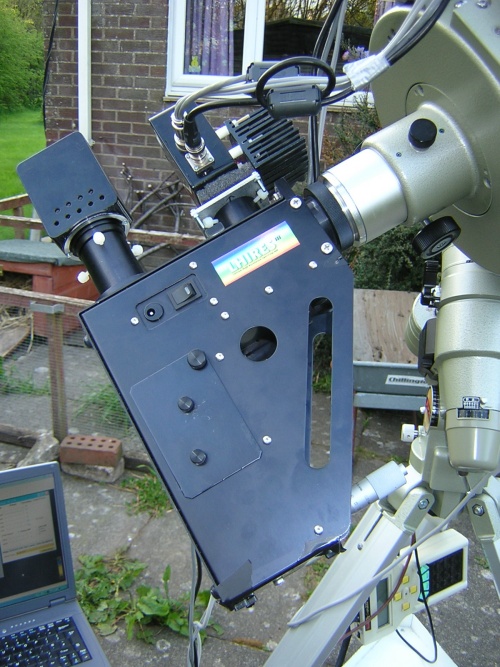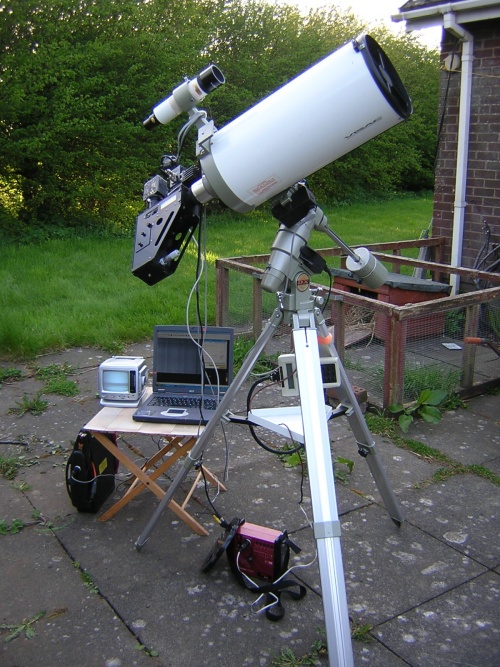|
|
The spectrograph uses a reflective slit to allow the target to be placed on the slit and guided during the exposure. In this photo the slit is being viewed by the 1004x-JG camera in video mode. (I now use a Stellacam EX) The B+W SC3 converted Vesta webcam is being used to acquire the spectrum. (I now use a cooled ATIK ATK16IC-S camera) (The design width of the slit is 25 micron which is 3.4 pixels with this camera. This equates to 3 arcseconds with the VC200L at prime focus (f9). The micrometer adjusts the angle of the grating to tune the wavelength. With this camera the field is about 1500A with the 150 grating and 90A with the 2400 grating. The spectrograph includes a neon lamp calibration standard. Because the collimating lens is an achromat, it has to be adjusted, depending on wavelength, to optimise resolution. Access to the adjustment is via a door in the side of the spectrograph. When using the 150 grating, the spectrum is not consistently sharp across the 1500A field, particularly below 4500A |
|
|
The requirement to be able to identify the target in the small field of the guide port, place the star on the slit and maintain it in position during long exposures requires a good mount. This together with the extra weight has shown up some weaknesses in my mount which is going to need need some tuning work done on it. (I still have the same mount but the setup is now in a permanent, semi-automated observatory which you can see here) In this setup, the reflection from the slit is being viewed on a TV monitor. Longer term, the aim is for automatic guiding. (auto guiding is now implemented. I have also automated the neon calibration lamp) |

